Masanao Takeyama, Professor, Faculty of Economics
Constructing new product and service value through research in service design
Masanao Takeyama
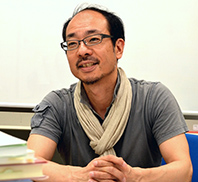
Graduated the Faculty of Economics, Keio University, 1988. Completed the Master's Program at the Graduate School of Economics, Keio University, 1990. Completed the Doctoral Program at the Graduate School of Geography, University of California, Santa Barbara, 1993. Research Assistant, Faculty of Environment and Information Studies, Keio University, 1994. Lecturer, Faculty of Environment and Information Studies, Musashi Institute of Technology (now Tokyo City University), 1997. Became Assistant Professor at Musashi Institute of Technology in 1999. After taking a position as Assistant Professor at the Keio University Faculty of Economics in 2003, became Professor in 2008.
Designing service systems which connect product, person, and place
─ What kind of research field is service design?
Service design is a new design field that has developed mainly in Europe. In mature societies, a major theme is not just manufacturing a product but how to generate better quality services to go along with that product. With the prevalence of information networks in modern times, there is demand for the new value generated by providing services which are not stand-alone but which function as media that include PDAs, PCs, and televisions, and as systems that interconnect products, people, and places.
In order to construct service systems such as these, it is necessary to join forces with different fields of business to uncover potential consumer needs which have yet to be discovered and at the same time develop methodologies which will lead to innovation. One major feature of service design is making it a point to not only revolutionize an already established business area, but to also occasionally deconstruct the very conditions which contributed to the success of an existing business in order to transform it into a new business field altogether.
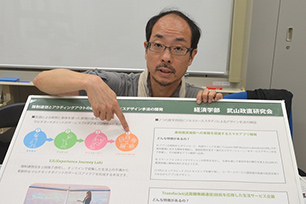
─ Could you give an instance in which a service design approach was taken?
One example currently attracting attention is a car-sharing service in which individuals can use a car whenever they need one. An information network provides the basis for this service. The company compiles necessary information in a database, using GPS to keep tabs on which cars are in service and to calculate how many cars are where, for example. With this service, members can reserve their car of choice using a computer, mobile phone, smartphone, or other mobile terminal and enjoy having a car whenever they please.
This is just one example of a new business that would be unthinkable without the linkage between the product (a car) and information networks such as GPS, computers, and mobile phones. Other projects are being developed in other areas of business as well, such as syncing sports shoes with a digital audio player so the listener can work out according to a training menu installed in the player while enjoying their favorite music.
─ You say that services which deviate from conventional ideas are needed.
Yes, until now the manufacturing industry has focused on creating goods, and services were seen as an extra in order to sell those goods, but under current trends which couple goods and services, the manufacturing industry is becoming more service-oriented. In the fields of medicine and welfare, many players such as the government, citizens, NPOs, and corporations are proceeding with the construction of service systems.
If the methodology of conventional marketing was to derive the best solution to meet clearcut needs on a certain issue, service design discovers issues by investigating people's needs before they are even aware of them and without knowing where issues may lie. You could call this a strategic process to construct a never-before-seen approach to service and a new relationship between goods and services. Service design is a research field suited for advances in technology, changes in social structure, and shifts in the structure of production and consumption.
Presenting future services together with students
─ Do you involve seminar students in your research?
In my seminar class, I conduct collaborative research between industry and academia together with my students. Third- and fourth-years form six- to eight-person teams and decide their research topic based on a real issue that a company is facing and make suggestions towards a solution.
Up until now, we have conducted joint research with a number of companies with diverse specialties like automobiles, printing, information communications, beverages, media, and advertising in addition to others. I assign students responsibilities and coach them, so they can make presentations which appeal to companies.
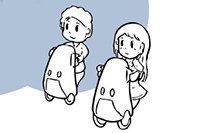
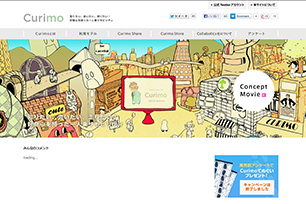
For more details, please visit: http://curimo.com/
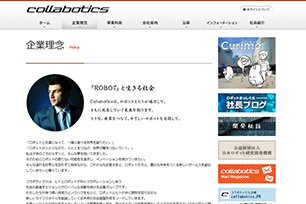
─ Could you introduce an actual project your seminar class has worked on?
We did a tie-up project with the research division of a certain automobile company. Under the premise that future methods of personal mobility (single-person transport equipment) will soon be developed with robot technology onboard, we created a website which summarized the product and its appeal and had consumers evaluate the product through an online survey.
We created a product description site and fictional corporate site by imagining how the lives of consumers will change when personal mobility vehicles begin to be sold. We predicted and worked out the product price, specifications, sales model, and actual scenes of use and even created a concept movie. By created a thoroughly detailed image of the product, even including a corporate philosophy and an interview with the president, we conveyed our image for vehicles of the future to the users who accessed the site.
Here we imaginatively depict a never-before-seen future society, business, and way of life and pose possible prototypes by presenting various pieces of "evidence." This methodology is called "reverse archaeology" in the field of service design. Its allure lies in the fact that we can judge the value of products and services unavailable in life today by implementing imagination for the future as fiction.
We received a large number of responses and suggestions after unveiling our site in 2012.
Looking to collaborate with public organizations, NPOs, and small- to mid-sized companies
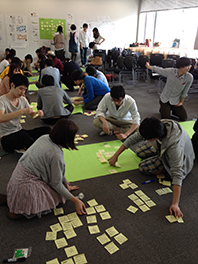
─ Please tell us about how you got started researching service design.
When I was a student in the Faculty of Economics, I belonged to the urban economics/economic geography seminar, where I became interested in how economic activity emerges and how it is concentrated in urban and regional spaces. I went on to graduate school and I decided to study abroad at the University of California's graduate school of geography in order to delve deeper into my field, where I became involved in research which used computers to analyze spatial data. I conducted research which married economic geography with computers, using satellite imagery to plot the process by which residential areas expand into urban spaces and IT companies become heavily concentrated in the Silicon Valley.
Around the time I came back to Keio after studying abroad, my academic supervisor, Dr. Junjiro Takahashi, was working hard to launch Shonan Fujisawa Campus (SFC), so I continued my research activities as an assistant at SFC. At the time, mobile phones were still uncommon, but laptop computers, electronic organizers, and other IT devices with mobile capabilities had just emerged. Using the city as my laboratory, I started a seminar class which conducted experimental research into how our lives would change due to IT device usage.
─ So that's how these experiences have led up to your research into service design.
That's right. I then spent three years at another university devising the curriculum for an introduction to multimedia communication. There I presided over a seminar in which we conducted urban fieldwork with an engineering mindset while providing guidance on video editing which used image processing software. After that, I took a position in the Faculty of Economics at Keio University and, again turning my gaze towards the city, I worked out my own methodologies on research themes such as consumer behavior and marketing research using IT and on how to connect them with business.
The knowhow gained thus far in my career as a foundation, I have been working on service design for several years trying to systematize methodologies for creating new services.
There has been a recent increase in corporations seeking new themes and hints in their business approaches, and we have begun to see an increase in joint academic-industry projects with corporations training specialists in new fields.
─ Please tell us about the direction of your future research.
I would like to advance service development methodology which involves the average consumer’s participation. Additionally, I would like to take on a challenge in a new area, supporting not only big corporations but also local government and NPOs, as well as small- to mid-sized companies with original techniques and methodologies.
*This article appeared in "Kenkyu Saizensen" (Jul. 11, 2013) of Keio University Japanese Website.
*Position titles, etc., are those at the time of publishing.
